En una exploración que realice algunos días atrás vi varios ejemplares de cactus en la montaña, literalmente en todo el entorno se encontraban cactus de diferentes especies, tamaños, colores y en lugares un tanto distintos.
Algunos se encuentran un poco mas cerca del agua que otros, los demás sencillamente están regados por toda esta región y abundan en grandes cantidades.
En la extrema sequia solo se ven este tipo de plantas un buen aspecto, pero cuando la temporada de lluvias llega comienzan a florecer y a dar sus frutos que la mayoría son comestibles y deliciosos.
In an exploration that I made a few days ago I saw several specimens of cactus in the mountain, literally all around were cactus of different species, sizes, colors and in somewhat different places.
Some are a little closer to the water than others, the rest are simply watered throughout this region and abound in large quantities.
In the extreme drought only these plants look good, but when the rainy season arrives they begin to bloom and give their fruits, most of which are edible and delicious.
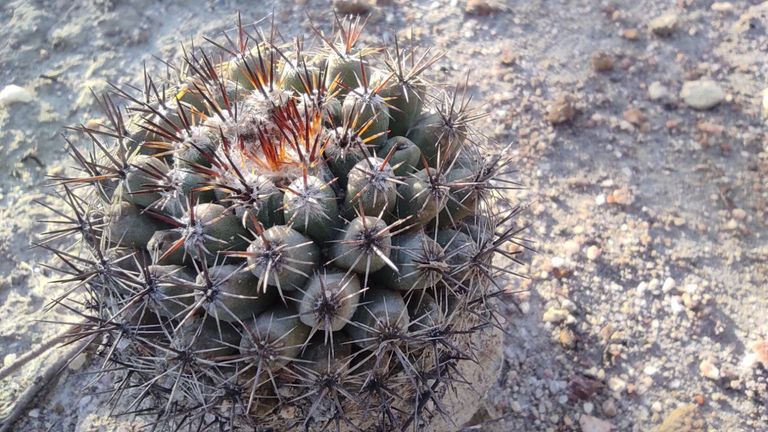
Este tipo de cactus es muy similar a la familia de "Oreocereus" ya que tiene una especie de ceda o lana, se diferencia en la altura ya que no llega a medir los 3m que debería tener, solos los he visto de este tamaño al parecer es realmente comercial para los jardines de las grandes casas. Es muy llamativo ya que sus púas superiores son de una tonalidad amarillenta que cambia de color, cuando el cactus crece y envejece un poco mas.
A simple vista utilizando la web no logro saber su taxón ni nombre científico ya que es muy similar a 3 cactus que vi.
This type of cactus is very similar to the "Oreocereus" family as it has a kind of silk or wool, it differs in height as it does not reach the 3m that it should have, I have only seen them of this size apparently it is really commercial for the gardens of large houses. It is very striking because its upper barbs are of a yellowish hue that changes color as the cactus grows and ages a little more.
At first glance using the web I can not know its taxon or scientific name as it is very similar to 3 cacti I saw.
Sin embargo les dejo algunas fotografías de como lucen otros a su alrededor y lo pequeños que son.
This type of cactus is very similar to the "Oreocereus" family as it has a kind of silk or wool, it differs in height as it does not reach the 3m that it should have, I have only seen them of this size apparently it is really commercial for the gardens of large houses. It is very striking because its upper barbs are of a yellowish hue that changes color as the cactus grows and ages a little more.
At first glance using the web I can not know its taxon or scientific name as it is very similar to 3 cacti I saw.
However I leave you some pictures of how others look like around them and how small they are.
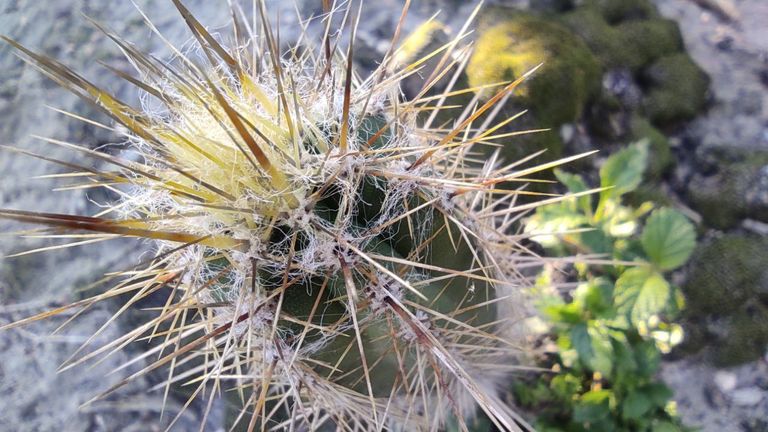

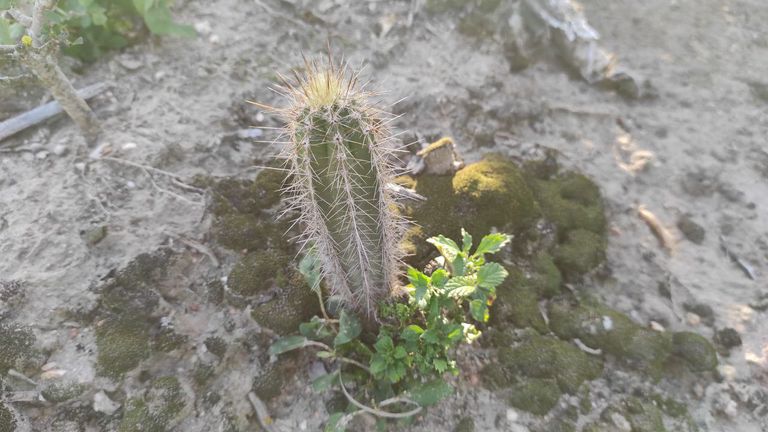

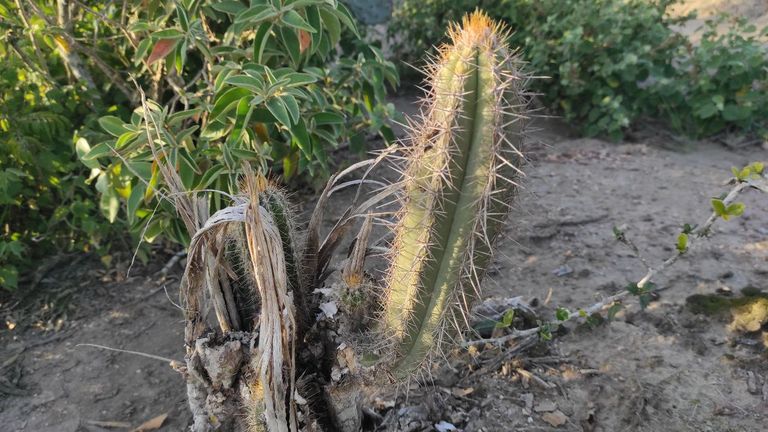
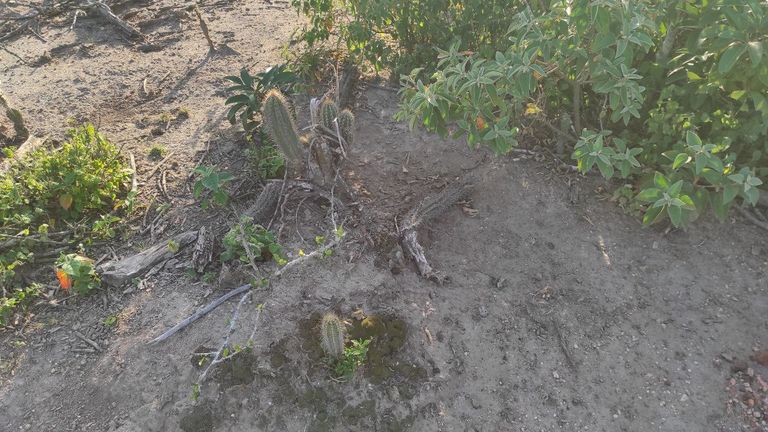
Este es de otro tipo mas pequeño, mas ornamental el cual muchas personas tienen en sus macetas en los departamentos o casas, mucho mas fáciles de tener en espacios reducidos. Aunque sea de un tamaño pequeño hay otras especies muy similares como lo son Lobivia arachnacantha, Mammillaria, aunque de igual manera no logro identificar las características esenciales para saber su nombre científico.
Algunos llegan a tener flores amarillas, rosadas y violetas, son algunas de las que me fe fijado en diferentes temporadas, pero estos dos ejemplares que fotografié estaban muy pequeños aun.
This is another type of smaller, more ornamental which many people have in their pots in apartments or houses, much easier to have in small spaces. Although it is of a small size there are other very similar species such as Lobivia arachnacantha, Mammillaria, although in the same way I can not identify the essential characteristics to know its scientific name.
Some of them have yellow, pink and violet flowers, these are some of the ones I have noticed in different seasons, but these two specimens I photographed were still very small.
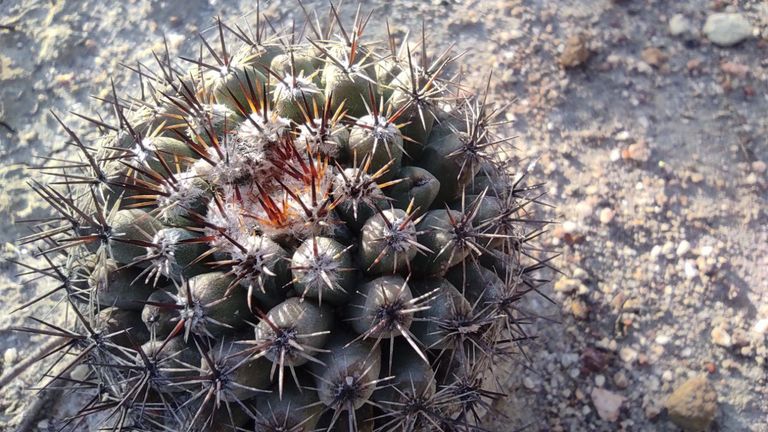
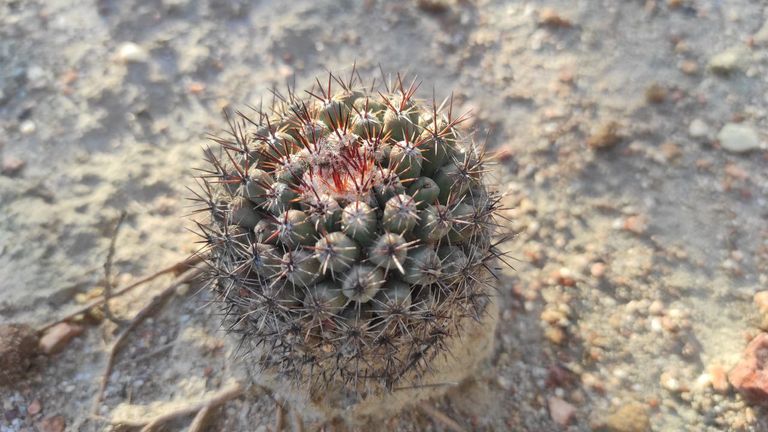

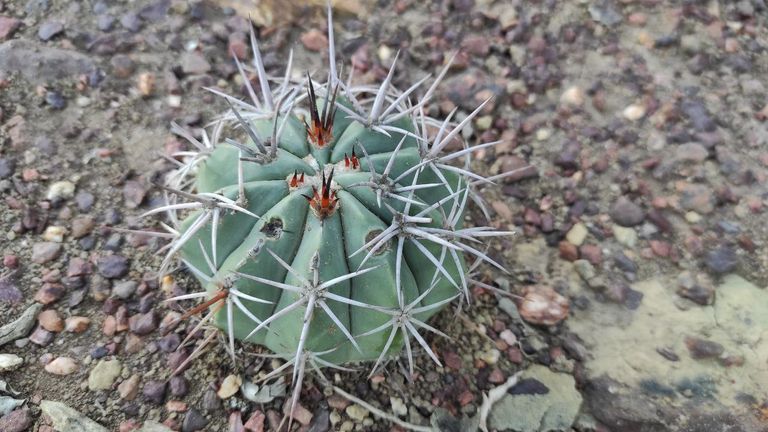
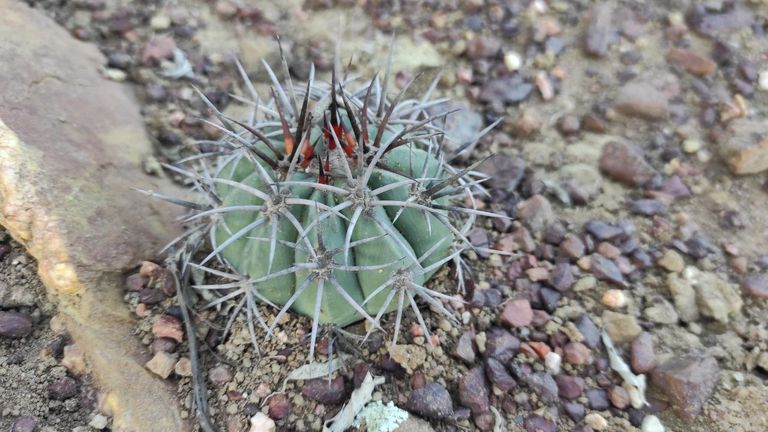
Son tan pequeños que caben en la palma de mi mano, sin embargo este lo he visto crecer a un tamaño mucho mayor que puede dar una flor y luego un pequeño fruto, en mi región se le conoce como "buche" de nombre científico "Melocactus curvispinus", y hay personas que hacen dulces con este cactus, retiran las puas y solo se concentran en el centro el cual cocinar y hacen diferentes dulces con ellos, jamás los he probado.
They are so small that they fit in the palm of my hand, however I have seen this one grow to a much larger size that can give a flower and then a small fruit, in my region it is known as "buche" of scientific name "Melocactus curvispinus", and there are people who make sweets with this cactus, they remove the spikes and only concentrate on the center which they cook and make different sweets with them, I have never tasted them.
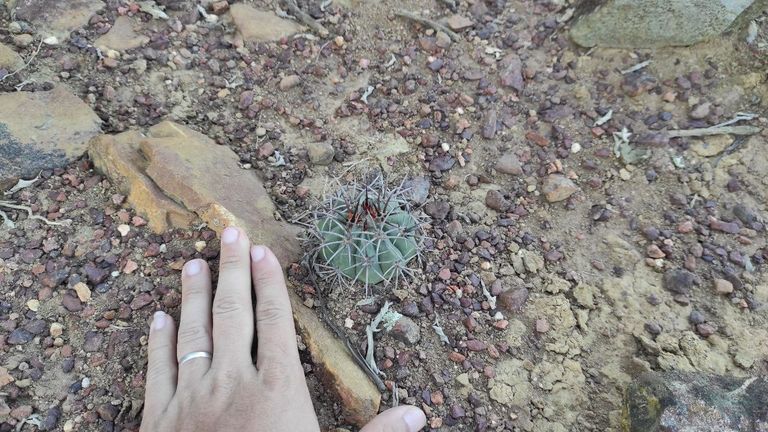
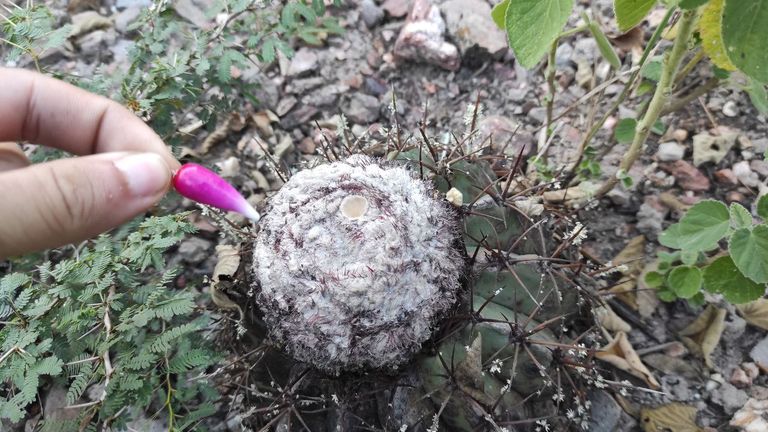

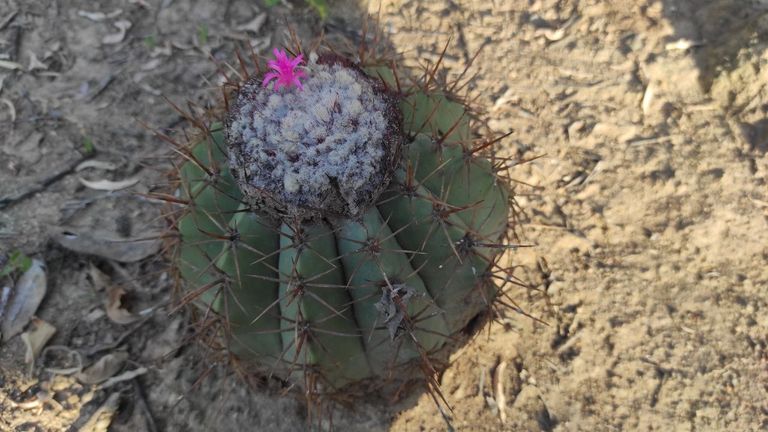
Y existe el mas común que esta en absolutamente toda la zona, llamado aquí como "Cardón" nombre científico "Pachycereus pringlei", hay diferentes tipos de ejemplares con características distintas, algunos crecen por encima de los 15mt de altura, llegando 20mt. Otros tienen púas realmente grandes y que asustan, me imagino que caer sobre uno debe ser doloroso.
Tienen grandes ramas que crecen con el tiempo y literalmente son vistos como arboles de espinas, particularmente estos dan un fruto realmente delicioso que no es muy comercial, pero los pobladores locales lo comen en la temporada en la que hay cosecha.
And there is the most common that is in absolutely all the area, called here as "Cardon" scientific name "Pachycereus pringlei", there are different types of specimens with different characteristics, some grow above 15mt in height, reaching 20mt. Others have really big and scary spikes, I imagine that falling on one must be painful.
They have large branches that grow over time and are literally seen as thorn trees, particularly these give a really delicious fruit that is not very commercial, but the local people eat it in the harvest season.
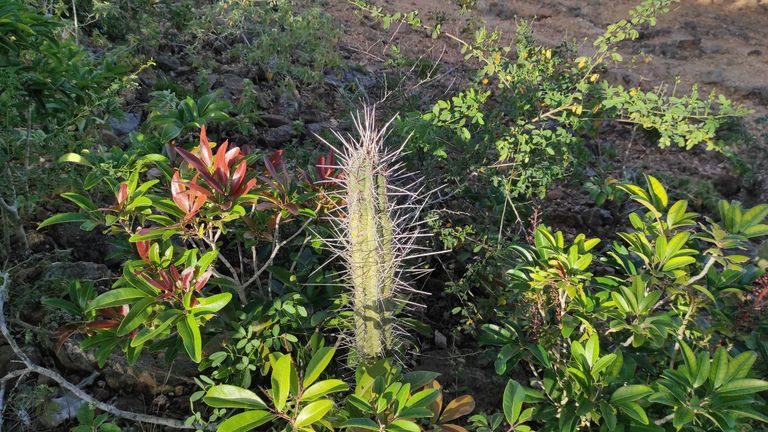

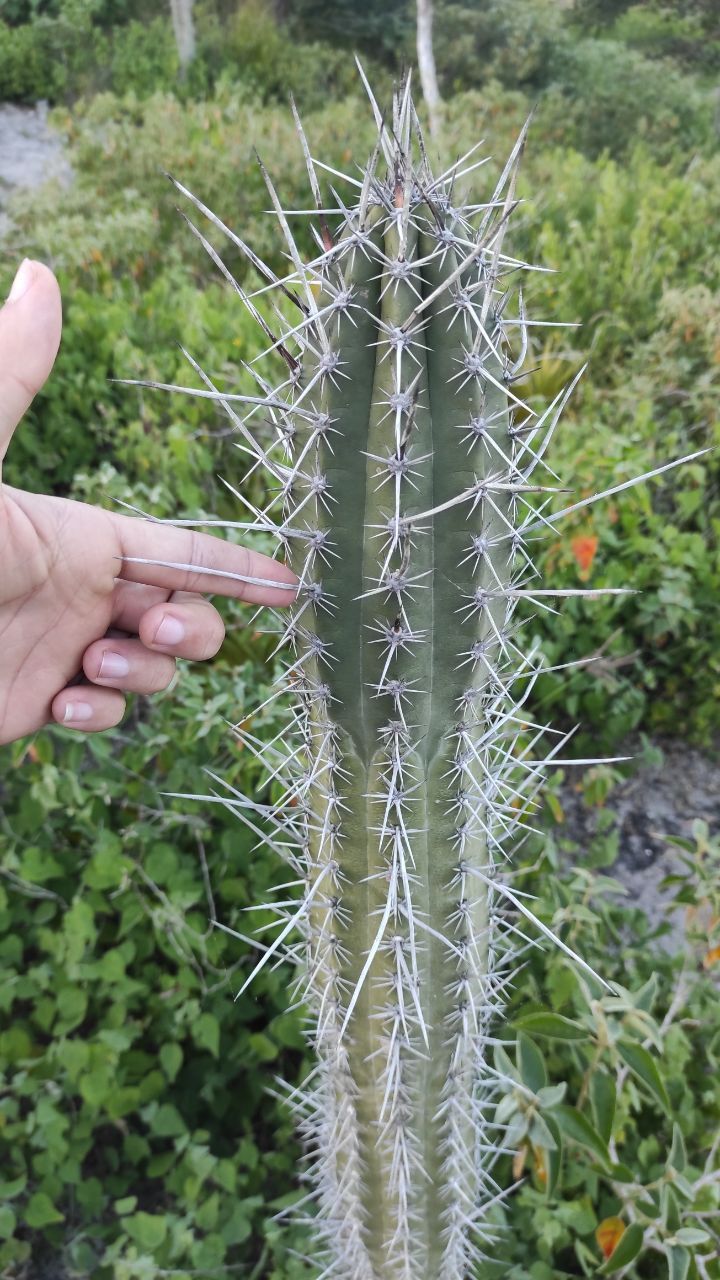

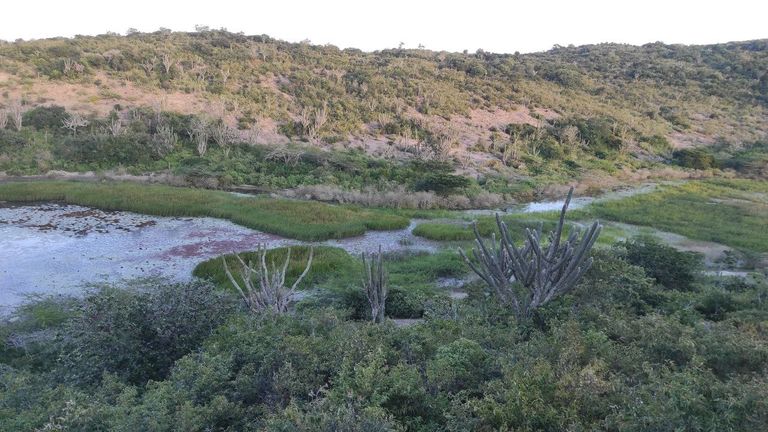
Nos vemos en un próximo post.
See you in a future post.